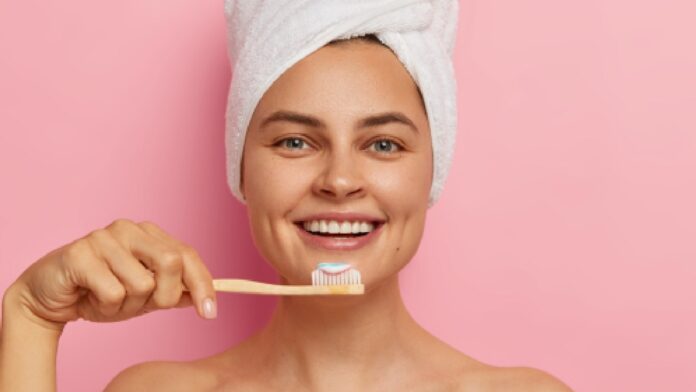A whitening toothpaste may help to remove stains from your teeth and improve their appearance. But is it safe to use a whitening toothpaste?
Your choice of food can not only leave you with bad breath, but also leave behind stains on your teeth. Tea, coffee, red wine, berries, and fruit juices are common causes of stained teeth. Routine cleaning and polishing at a clinic can help to get rid of surface stains. Brushing your teeth with a whitening toothpaste can help too. Such toothpastes have ingredients that can polish the teeth and make them appear whiter. But tooth sensitivity is often associated with whitening toothpastes. Does that mean a whitening toothpaste can be bad for your teeth?
What is a whitening toothpaste?
Whitening toothpaste is a type of toothpaste formulated specifically to remove surface stains from teeth, helping to restore their natural whiteness and improve overall appearance. Whitening toothpaste works primarily on the surface stains caused by food, drinks, and smoking, says cosmetic dental specialist Dr P. Parthasarathi Reddy.

Whitening toothpaste typically works through a combination of physical and chemical mechanisms:
- Mild abrasives like silica, calcium carbonate or baking soda help scrub away surface stains without damaging the enamel. They are used to polish the teeth and make them look whiter.
- Some whitening toothpastes contain bleaching agents like hydrogen peroxide or carbamide peroxide, which help to chemically remove tooth stains. These chemicals can penetrate the enamel and break down the compounds that cause discolouration.
- Certain enzymes, such as papain and bromelain, are included to break down the protein pellicle layer on teeth, making it easier to remove stains.
What are the side effects of using a whitening toothpaste?
Common side effects of whitening toothpaste include:
1. Tooth sensitivity
The abrasives and chemicals used in whitening toothpastes can cause increased sensitivity, says the expert. You will particularly experience it while having hot or cold foods and beverages.
2. Gum irritation
Some people may experience gingival or gum irritation when the gums come in contact with peroxide-based gels. It is usually due to improper application of the gel, as per the American Dental Association.
3. Enamel erosion
Whitening toothpastes can typically lighten colour of teeth by one or two shades, but they may also affect the mineral content of teeth, according to a 2023 analysis published in the Clinical Oral Investigations journal. So, the surface roughness can get increased and microhardness, which is an essential element of tooth enamel, can get reduced. If enamel erosion happens, there may be a higher chance of tooth decay and sensitivity.
RDA value of whitening toothpaste
Relative Dentin Abrasion or RDA value measures the abrasiveness of a toothpaste. The scale ranges from 0 to over 200:
- 0 to 70: Low abrasivity, so it is safe for long-term use.
- 70 to 100: Medium abrasivity, suitable for most people.
- 100 to 150: High abrasivity, effective for stain removal, but should be used with caution.
- 150 to 200+: Very high abrasivity, should be used sparingly and only under professional supervision.
To prevent tooth damage while using a whitening toothpaste, use one with an RDA value of 70 to 100, says Dr Reddy. High RDA values can lead to enamel erosion, while very low RDA values may be ineffective in removing stains.

How to make whitening toothpaste less harmful?
To minimise the harmful effects of whitening toothpaste, do the following:
- Use whitening toothpaste only when needed and not make it a daily routine, especially if it has a high RDA. Use whitening toothpaste once or twice a day and limit continuous use to a few weeks.
- Alternate between whitening toothpaste and regular fluoride toothpaste to reduce abrasive wear.
- Use a toothbrush with soft bristles and avoid using excessive force while brushing.
Who should avoid using a whitening toothpaste?
Certain people should avoid using a whitening toothpaste –
- People who already suffer from tooth sensitivity may experience increased discomfort.
- Whitening toothpaste can exacerbate gum irritation and should be avoided by those with gingivitis or periodontal disease.
- Young children should avoid whitening toothpastes due to the risk of enamel damage and ingestion of abrasive particles or chemicals.
- Individuals with already compromised enamel should avoid abrasive whitening toothpastes to prevent further erosion.
It is safe to use a whitening toothpaste, but make sure to not use it for long. Overuse of whitening toothpastes may br bad for your teeth and gums.

